“Bernie had completely forgotten he had this. He said, ‘Oh, I looked in one of my old storage spaces today and I found another four guitars’”: Up close and personal with some of late guitar hero Bernie Marsden’s rarest vintage instruments
Before he passed away, Whitesnake hero Bernie Marsden put some of his lifelong collection of guitars up for sale. In this feature, written just days before Bernie tragically left us, we joined Mike Long of ATB Guitars to take a closer look
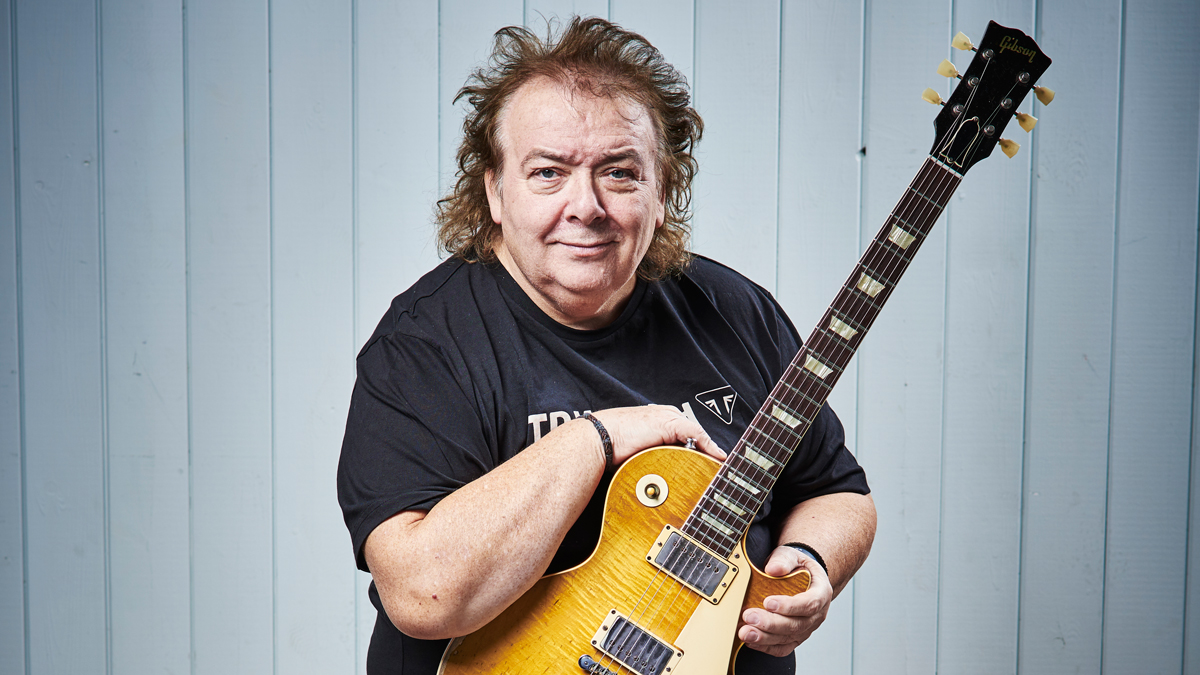
Bernie Marsden was one of Britain’s best-loved rock and blues guitarists, known not just for his role in penning huge Whitesnake hits such as Here I Go Again but also because of his enduring love for vintage guitars.
Bernie’s touring took him all round the world, and that provided the springboard for his many decades of guitar collecting, which saw him acquire a bevy of beautiful, rare and classic electrics, which he used across his prolific career.
So when news went out that Bernie was putting key guitars from his collection up for sale, it unsurprisingly caused quite a stir. Mike Long of ATB Guitars in Cheltenham, UK had the honour of being appointed the agent for what are arguably the most interesting guitars from Bernie’s collection.
News that Bernie’s infamously raw and exciting 1959 Gibson Les Paul (aka The Beast) was to head up the sale proved short-lived, however. The Beast was initially among the guitars offered for sale at ATB, but, perhaps understandably, after a bit of soul-searching Bernie withdrew it saying simply that he had “some constructive conversations with my family and they feel it should stay with me…”
Even without the presence of The Beast, the collection that is now with ATB is seriously impressive – with that fascinating prospect in mind, we joined Mike Long, founder of ATB Guitars, to explore some of the treasures of Bernie Marsden’s years of guitar-hunting.
Editor’s note: Guitarist magazine learned of Bernie’s death two days before going to press, so the following interview – conducted before his passing – refers to him in the present tense.
We took the decision to respectfully publish it as is, in tribute to Bernie’s lifelong love of guitar collecting.
Get The Pick Newsletter
All the latest guitar news, interviews, lessons, reviews, deals and more, direct to your inbox!
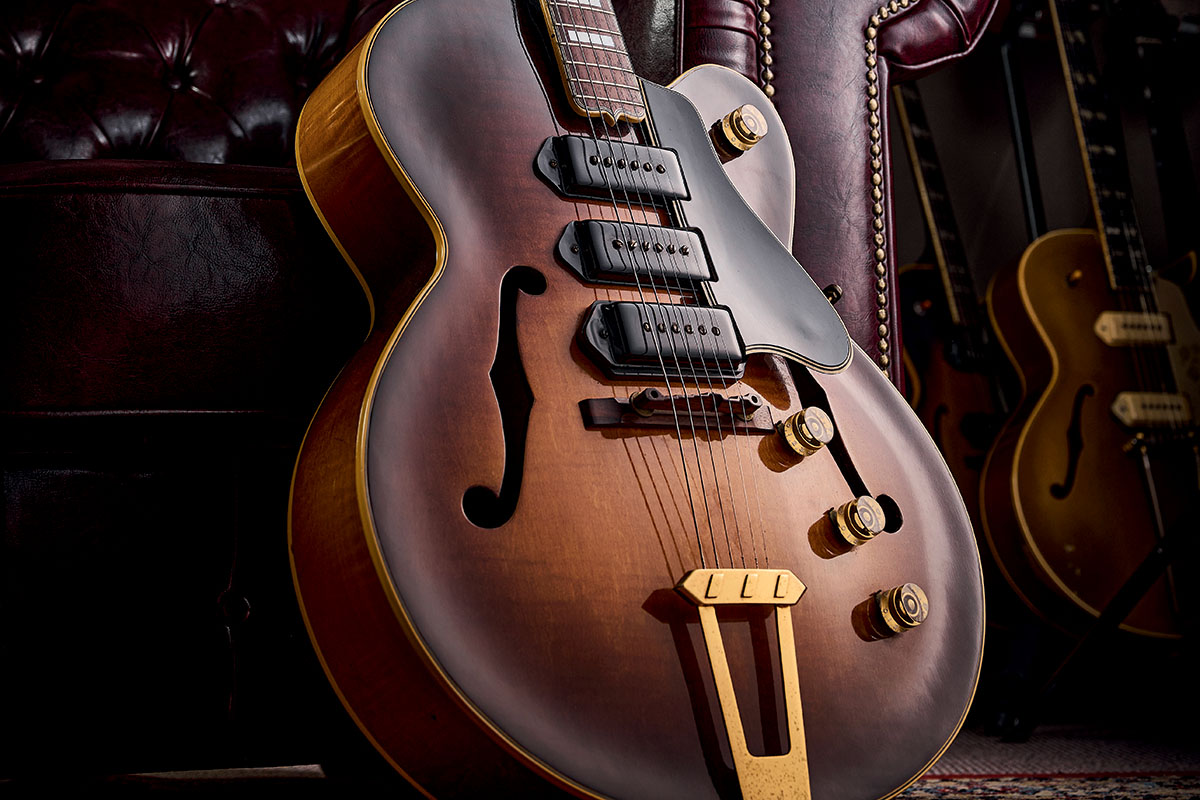
Bernie collected quite a few archtops and thinlines, but this ES-5 is one of the most beautiful. Tell us about it.
“Yeah, this is a beauty – a 1950 Gibson ES-5 in remarkable condition. It really is quite stunning. Nice, really big, thick neck… it’s got three P-90s with the original old curved covers, which were only used in the late ’40s and early ’50s. It’s got really nice tall, amber, clear Gibson knobs that were used in the very early ’50s.
“The tailpiece is probably a replacement at some point, I’d say – a lot of them did tend to break – but at least it’s period correct. Original frets and gorgeous condition with a brown Lifton case. There’s a little bit of wear on the neck, but it’s not too drastic.
“Bernie had completely forgotten he had this. He called us up about two weeks after we’d taken the initial lots. And then he said, ‘Oh, I’ve looked in one of my old storage spaces today and I found another four guitars. And this is one of them.’
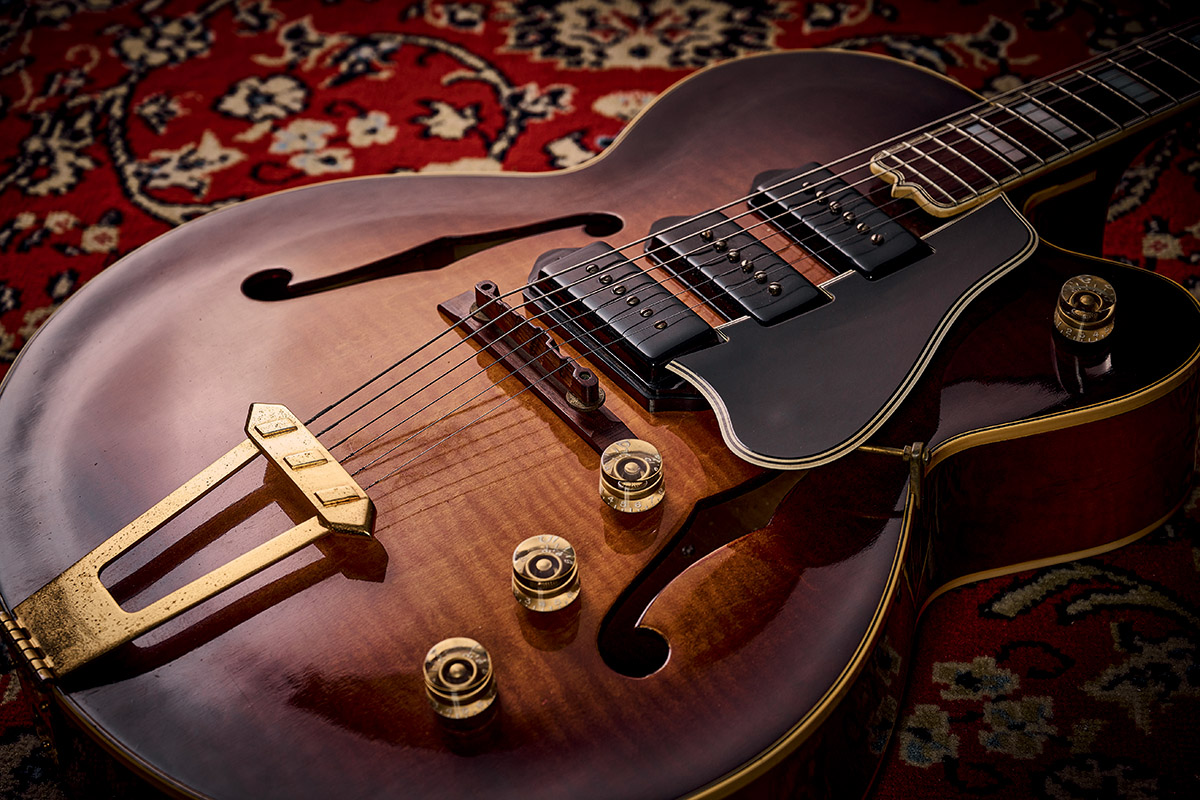
“I think ES-5s attract quite a wide variety of players. I mean, obviously, this is [the model] T-Bone Walker played, which is why Bernie bought it. It was something he’d been looking for for some time as he’s a T-Bone Walker fan. So, I mean, it can be used in blues, country… Chet Atkins had one, in fact. We had one of the ones that Chet Atkins had, which he wasn’t very well known for using, but he definitely used one in his recordings.
“Steve Howe from Yes also used one to great effect on Roundabout, I believe… things like that. It’s a bit of a strange guitar. And the people who play it would often surprise you with their diversity. So I don’t think you can classify it and say it’s ‘just a blues guitar’ or ‘it’s just a jazz guitar’ or anything like that. I think it lends itself to different forms of music quite well.”
It looks in pristine condition – how often do you find them like this?
“Not very often at all. Most of the ones we see are in pretty bad shape. So it’s very rare to come across one in this sort of condition.”
After the gig, he went up to Les Paul and asked him if he wouldn’t mind signing the pickguard, but neither of them had a pen. So Les Paul produced this screw from one of his cases and said, ‘I’ll sign it with a screw’
Some people call all ES-5s ‘Switchmasters’, but that’s not quite right…
“No. This is one of the early ones. This one has three pots, which are basically three volume controls, plus a master tone. Then [in 1955] they switched to a different layout whereby they had six controls; they basically had volume and tone for each pickup with a big four-way selector switch on the [cutaway horn].
“That selected pickup 1, pickup 2, pickup 3 and then the last position is all three pickups, which sounds glorious. Those were termed Switchmasters. Then in 1957, they switched over from P-90s to humbuckers. And they continued that through to the early ’60s.”
Speaking of P-90 pickups, there’s an early Les Paul Goldtop from 1952 in Bernie’s collection, too.
“Yep, first-year Goldtop. Again, in really nice condition, all-original, that one – I think the jack socket washer ring has been replaced.”
Would you say that a fair proportion of original 1952 Les Pauls ended up being ‘converted’ to the spec of later Les Pauls?
“Yeah, which is a shame, really. There’s nothing wrong with the original design once you get used to it. There’s a good few players out there who get on with that wrap-under bridge. And nowadays, if you don’t like it, you can get a MojoAxe [compensated top-wrap tailpiece] and have a normal experience.
“So there’s no excuse to rip them apart and change them. But a few years ago, that wasn’t so much the case; MojoAxe didn’t exist. And if you really had to do your palm muting, then that was the only thing you could do.”
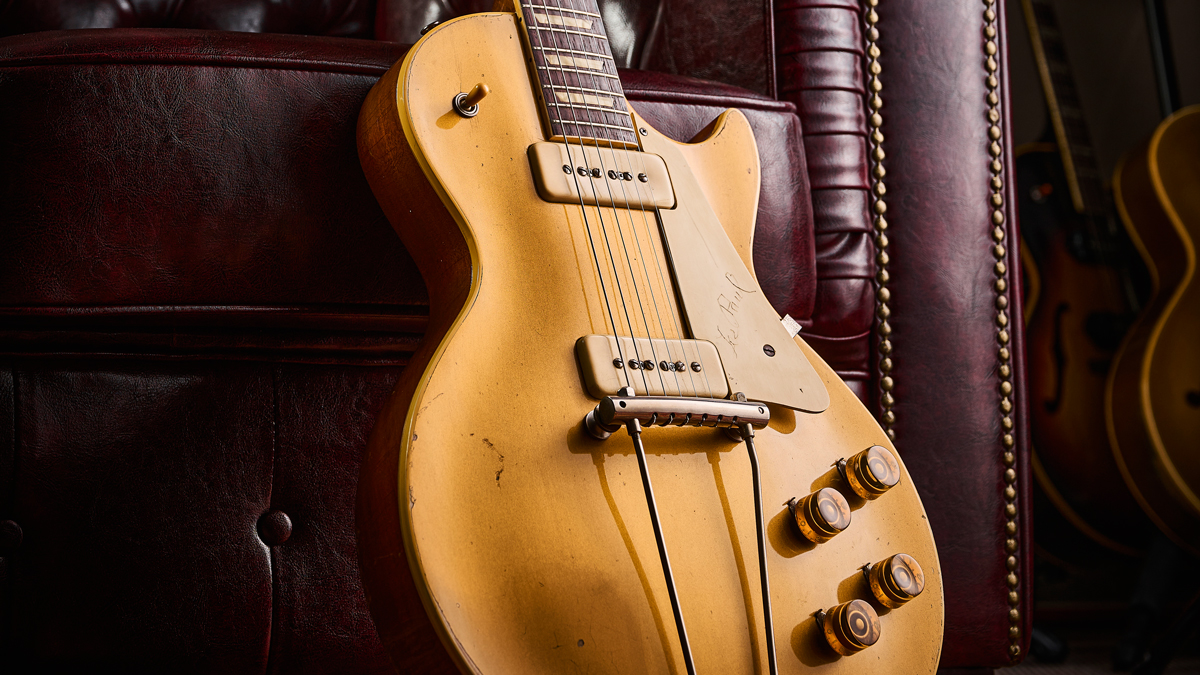
If you look closely, you can see a signature inscribed on the scratchplate.
“Yeah, this has got an interesting story. It was bought by Bernie from Jim Singleton, who owns Jim’s Guitars [in Pennsylvania]. Jim was at a concert with Danny Gatton seeing Les Paul and he brought this guitar, which had just come into his store, along to the concert.
“After the gig, he went up to Les Paul and asked him if he wouldn’t mind signing the pickguard, but neither of them had a pen. So Les Paul produced this screw from one of his cases and said, ‘I’ll sign it with a screw.’ That’s exactly what he did on the pickguard.
“You see Les Paul’s signature there, which was made by a screw or nail or something. He said to Jim and Danny, who were there witnessing this, that ‘If you ever come across a Les Paul signature, and it looks really rough like that, that’s how you know it’s genuine. That’s how I sign it.’ Included with the guitar is a letter of provenance from Jim Singleton stating all this.”
It looks very clean for its age…
“Yeah, it’s in great condition. I’d say it’s probably March or April ’52; it’s got the binding on it. No serial number and it’s still got the tall knobs, so mid-’52.”
These 1952 models used to be regarded as way less desirable than later Les Pauls. Has that changed in recent years?
“There’s been a massive increase in desirability. I mean, we were selling these for £10,000 to £15,000 only four or five years ago. We’re now selling them for 25 to 30 grand. Massively increased. One of the star performers of the last five years.”
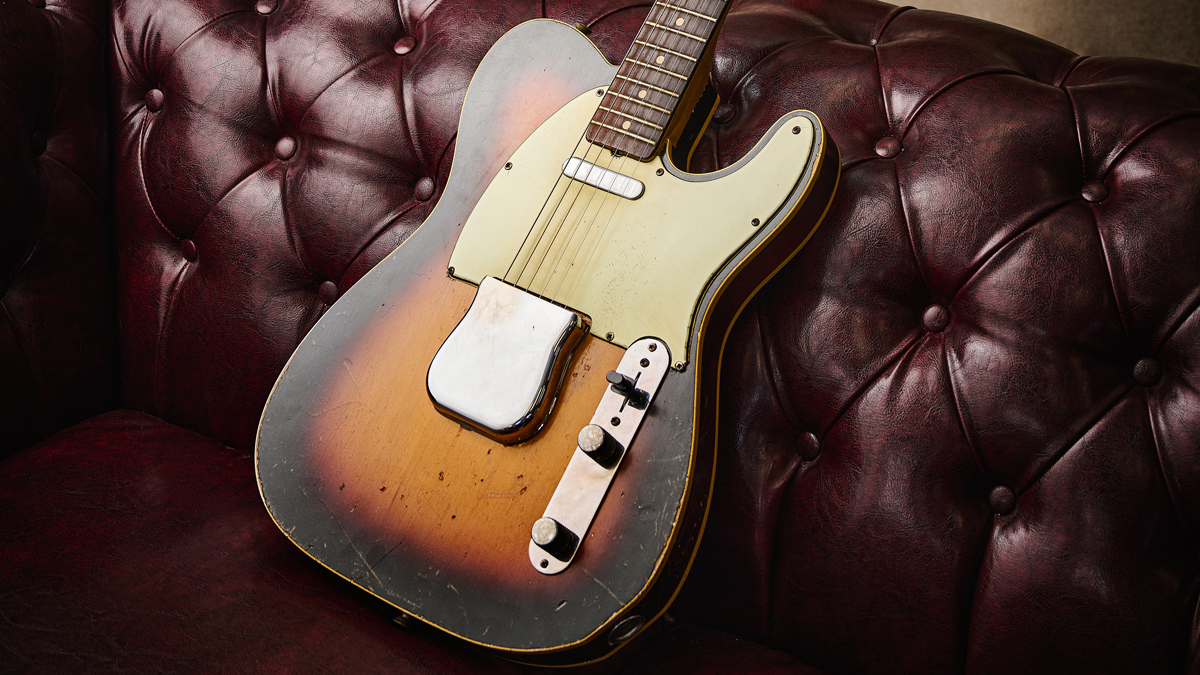
Tell us about the 1961 Custom Telecaster.
“I don’t know how long he’s had this. But he certainly has used it a lot – he’s pictured playing it with various people, including Robert Plant. It was obviously one of his favourite guitars to take out and play whenever he was asked to.
“There was a humbucker rout inside at the neck pickup. Somebody had Andy Summers’d it and put a humbucker in it, then changed their mind and put the original pickup back in. The wiring’s modified to post-’67 configuration, which means that the neck doesn’t sound like a damp pillow. But Bernie certainly enjoyed this guitar a lot. We’ve got lots of pictures of him on stage with it, so it’s obviously been one of his favourites.”
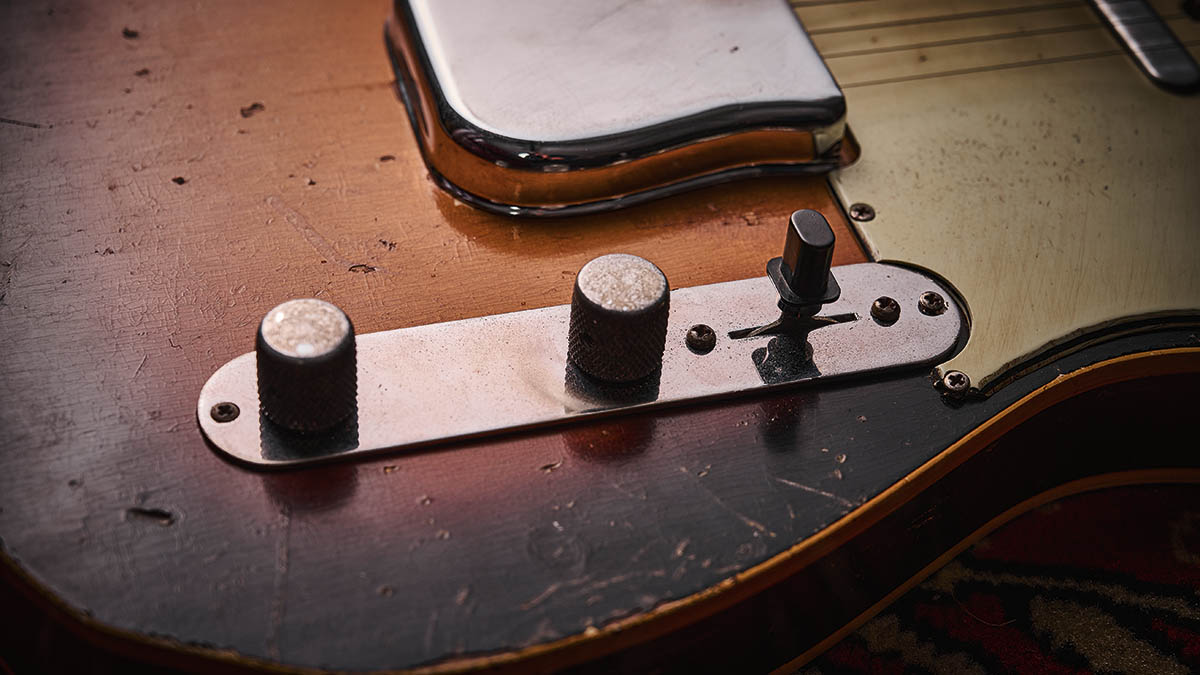
The Tele has a beautiful sunburst, but custom colours were just coming in around this time, too. Do you see many Custom Teles in other finishes?
“In the early ’60s, they didn’t make very many custom-colour Tele Customs. They started appearing in [greater numbers] later on in the ’60s; from around ’64 to ’65 you started to see Lake Placid Blue, Candy Apple Red, Inca Silver and Firemist Gold appear. In fact, I’ve yet to see one from this era – 1960 to ’61 – custom coloured; they’ve all been sunburst among the guitars we’ve come across.”
Tell us about the glorious EDS-1275 from Bernie’s collection. How scarce are original ’60s examples?
“Well, there were only three of these made in 1966 – and this is one of the three. In fact, I know this guitar extremely well. I was exhibiting at a guitar show in Leeds about 13 years ago and in walked a guy carrying a massive great aluminium flight case. His name was Alan Silson and he played in the Bradford band Smokie, who did Living Next Door To Alice.
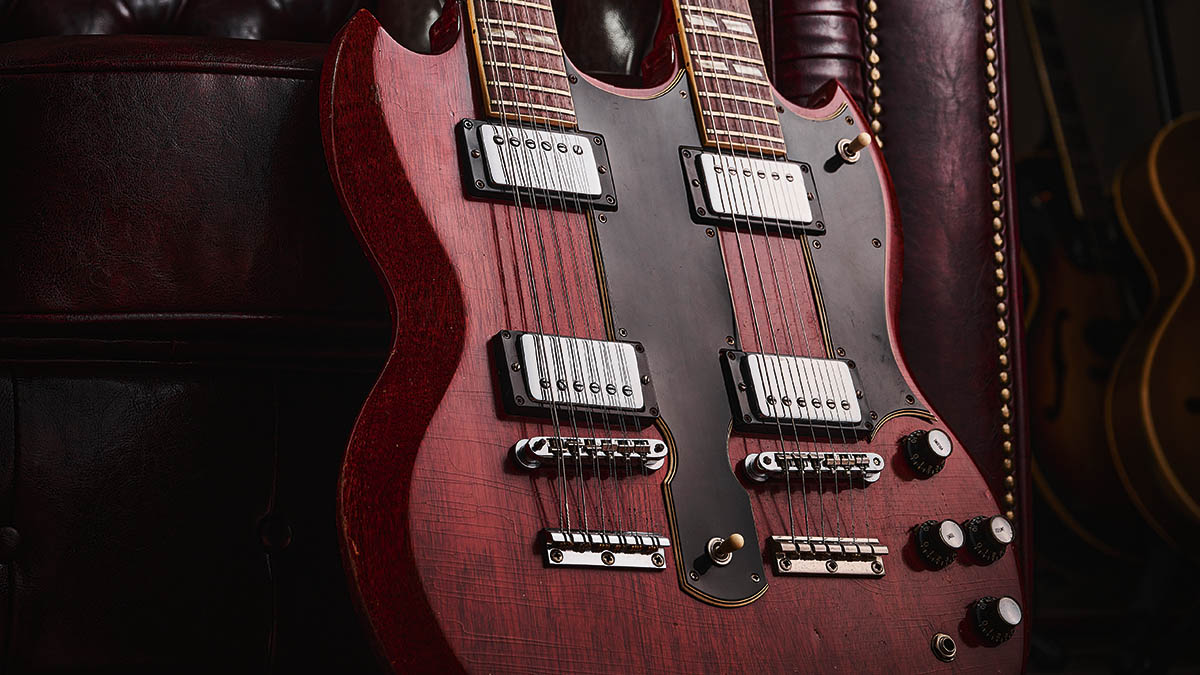
“In this massive aluminium flight case was this guitar, which is a 1966 Gibson twin-neck, which he was looking to sell. So I had a good look at it – I’d never seen one before, so I even had to look in the vintage guitar price guide to see how much I should offer. I offered him the market value at the time and he said, ‘Okay, I’ll think about it.’
“Then he walked the guitar around to every other dealer there and eventually came back to me and said, ‘Okay, you can have it.’ So I paid him the money for it and while I was doing that he was telling me the story that he bought his guitar directly from Martin Barre from Jethro Tull. He said that he thought that Martin used this at the 1970 Isle of Wight Festival.
“Now, I relayed this to Bernie – and Bernie knows Martin, so he contacted Martin who said, ‘I can’t remember’ [laughs]. So he’s neither confirmed nor denied this. But he knew that he did have a Gibson twin-neck at that point. So that’s basically it.
“Once I had it, I brought it back to Cheltenham. I can’t remember how Bernie heard about it, actually. I think we were in contact about something else and he was always asking me, ‘Has anything come in?’ so I just mentioned this. He was onto it straight away, so we met in a hotel room in Wales somewhere and he bought it.”
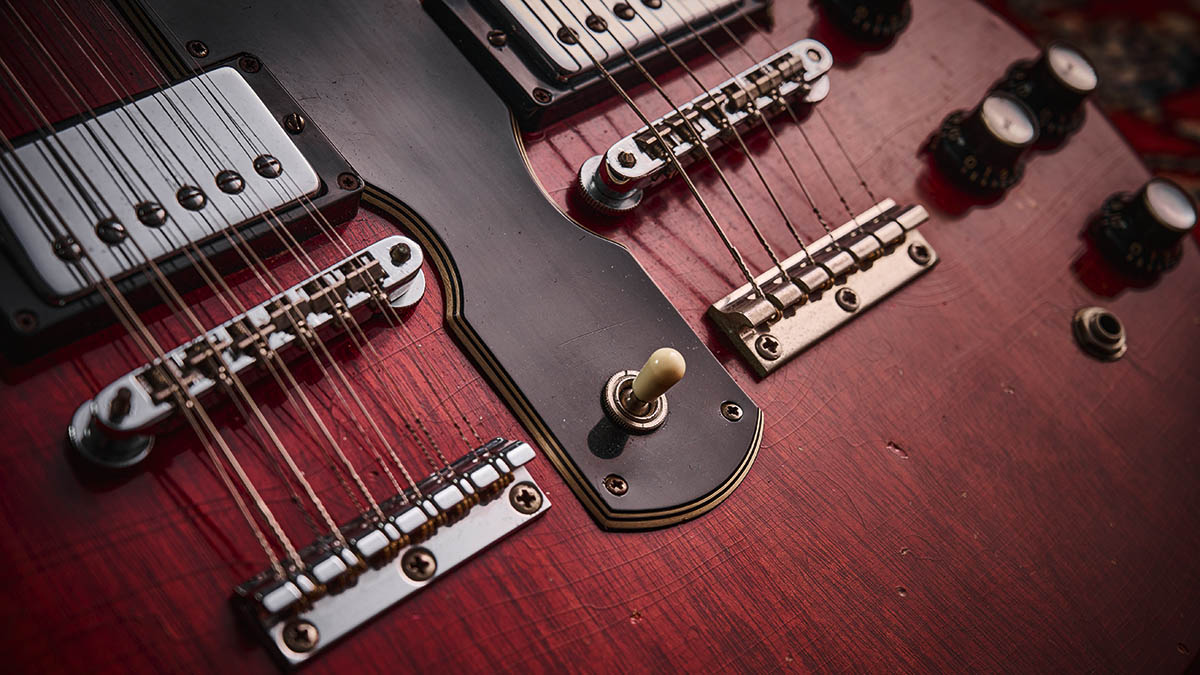
What was behind Bernie’s keen interest in it, do you think?
“He’d always had a twin-neck. In fact, he played one in Whitesnake for quite some time. Apart from using one in Whitesnake, I believe he was a big fan of Family as well and they used a twin-neck for their big hit Burlesque.
“He’d always wanted one of these Gibson twin-necks. This is one of the last of the ’60s examples, where the 12-string headstock was twice the length of the six-string. When they relaunched these back in the early ’70s, the headstock shrunk quite drastically.”
The EDS-1275 is different from just playing a normal SG. When you’ve got the switch in the middle and you’ve got both necks, when you play one, you can hear the 12-string sympathetically resonating
How different does this sound to a Gibson SG Standard of a similar age?
“It does sound very different. It’s hard to describe. I mean, I haven’t plugged it in for 13 years! But I remember when I did plug it in, I thought, ‘This is surprisingly different to what I was expecting.’ It feels more resonant, more powerful – it’s difficult to describe it, really.
“But it’s different from just playing a normal SG. When you’ve got the switch in the middle and you’ve got both necks [outputting signal], when you play one, you can hear the 12-string sympathetically resonating. That’s quite an eerie sound. Page used to use that quite a lot.”
Jamie Dickson is Editor-in-Chief of Guitarist magazine, Britain's best-selling and longest-running monthly for guitar players. He started his career at the Daily Telegraph in London, where his first assignment was interviewing blue-eyed soul legend Robert Palmer, going on to become a full-time author on music, writing for benchmark references such as 1001 Albums You Must Hear Before You Die and Dorling Kindersley's How To Play Guitar Step By Step. He joined Guitarist in 2011 and since then it has been his privilege to interview everyone from B.B. King to St. Vincent for Guitarist's readers, while sharing insights into scores of historic guitars, from Rory Gallagher's '61 Strat to the first Martin D-28 ever made.
“It holds its own purely as a playable guitar. It’s really cool for the traveling musician – you can bring it on a flight and it fits beneath the seat”: Why Steve Stevens put his name to a foldable guitar
“Finely tuned instruments with effortless playability and one of the best vibratos there is”: PRS Standard 24 Satin and S2 Standard 24 Satin review












